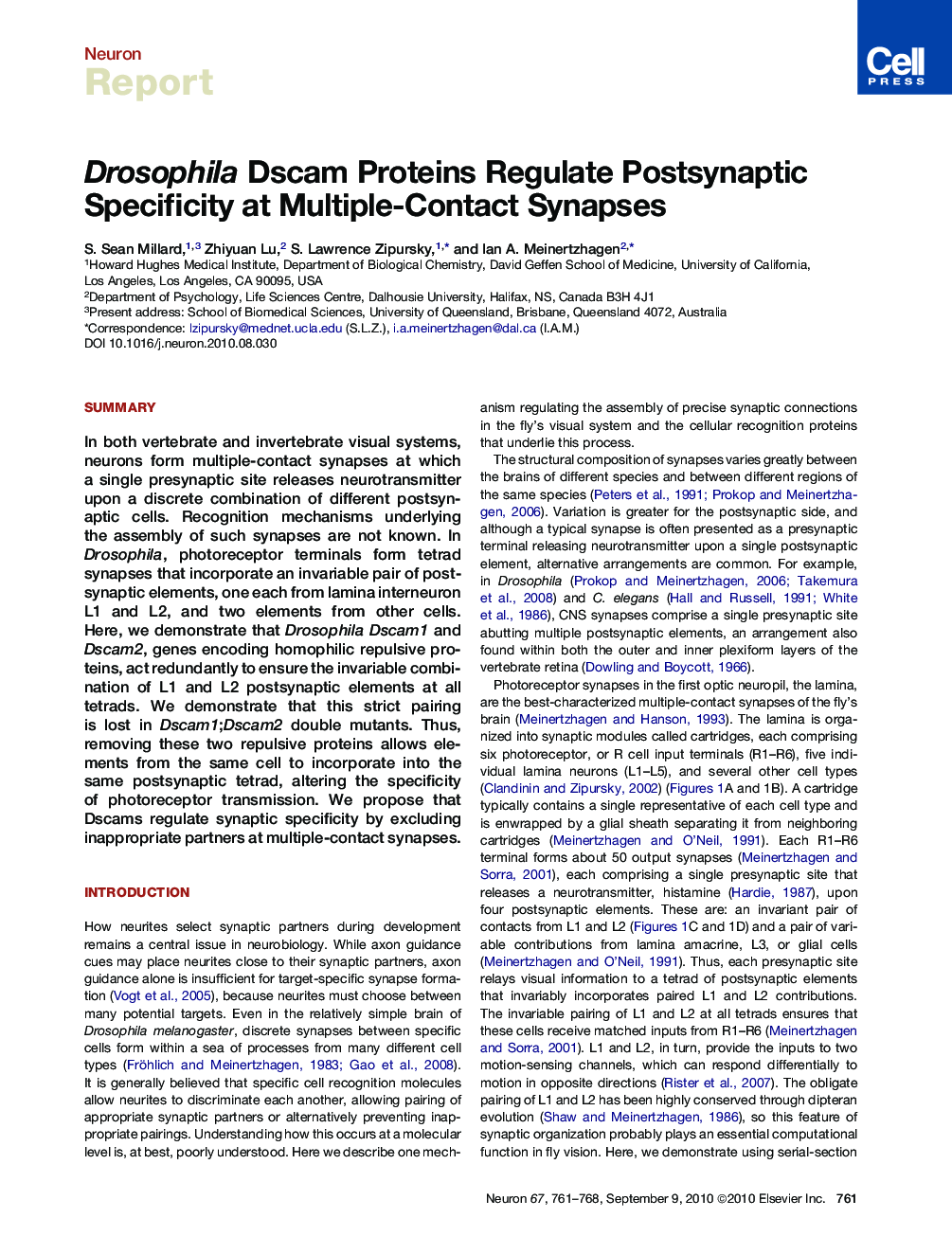| Article ID | Journal | Published Year | Pages | File Type |
|---|---|---|---|---|
| 4321916 | Neuron | 2010 | 8 Pages |
SummaryIn both vertebrate and invertebrate visual systems, neurons form multiple-contact synapses at which a single presynaptic site releases neurotransmitter upon a discrete combination of different postsynaptic cells. Recognition mechanisms underlying the assembly of such synapses are not known. In Drosophila, photoreceptor terminals form tetrad synapses that incorporate an invariable pair of postsynaptic elements, one each from lamina interneuron L1 and L2, and two elements from other cells. Here, we demonstrate that Drosophila Dscam1 and Dscam2, genes encoding homophilic repulsive proteins, act redundantly to ensure the invariable combination of L1 and L2 postsynaptic elements at all tetrads. We demonstrate that this strict pairing is lost in Dscam1;Dscam2 double mutants. Thus, removing these two repulsive proteins allows elements from the same cell to incorporate into the same postsynaptic tetrad, altering the specificity of photoreceptor transmission. We propose that Dscams regulate synaptic specificity by excluding inappropriate partners at multiple-contact synapses.
► Dscam proteins specify synapses through a redundant repulsive mechanism
